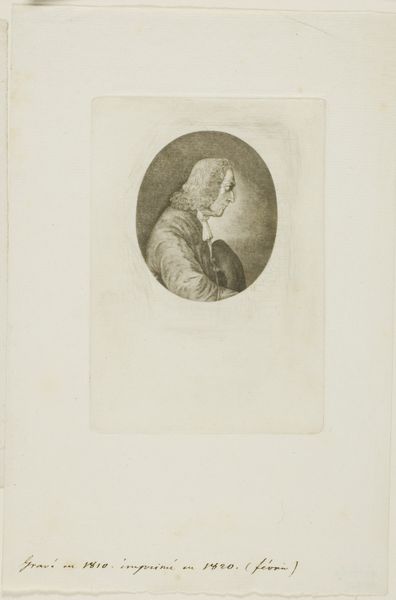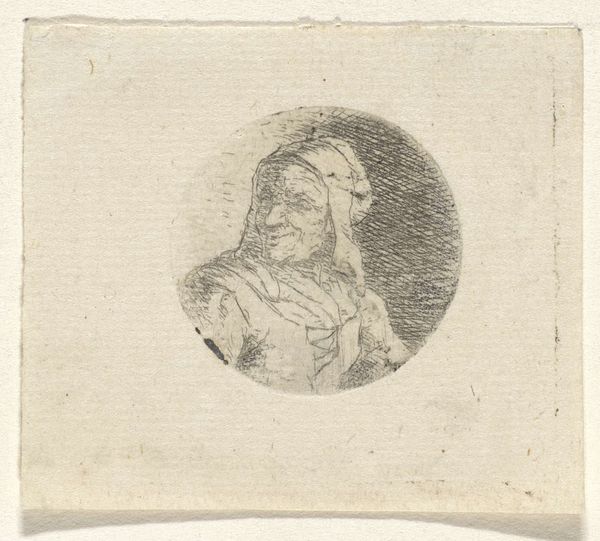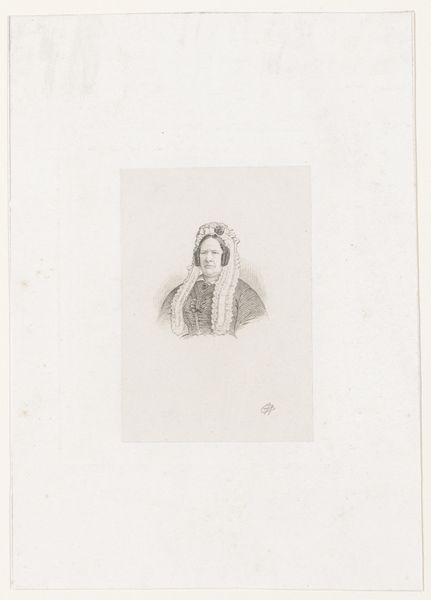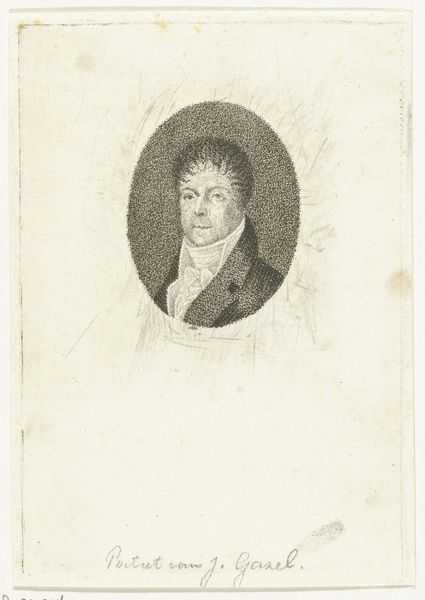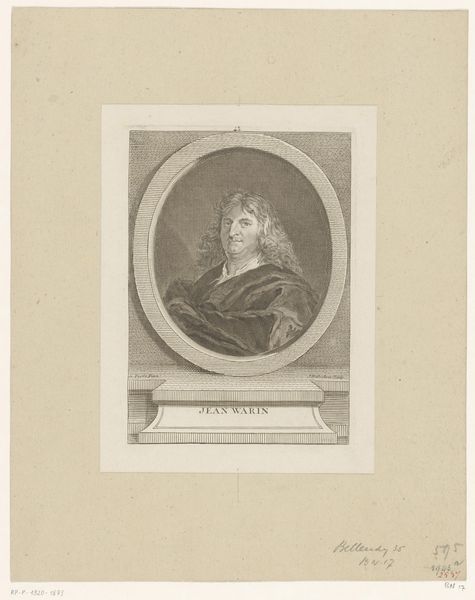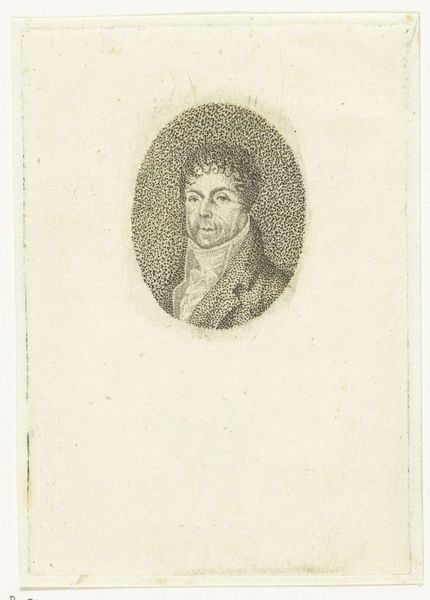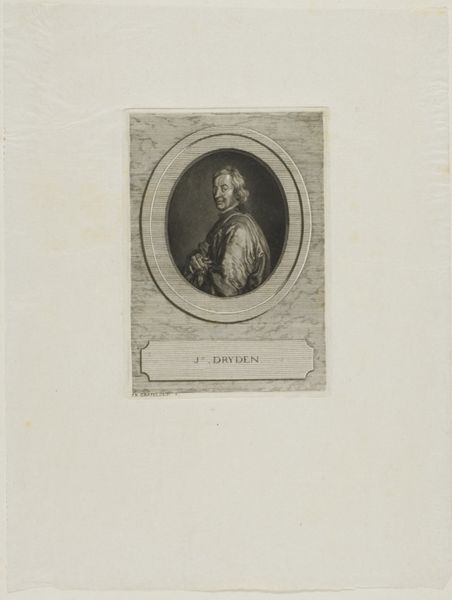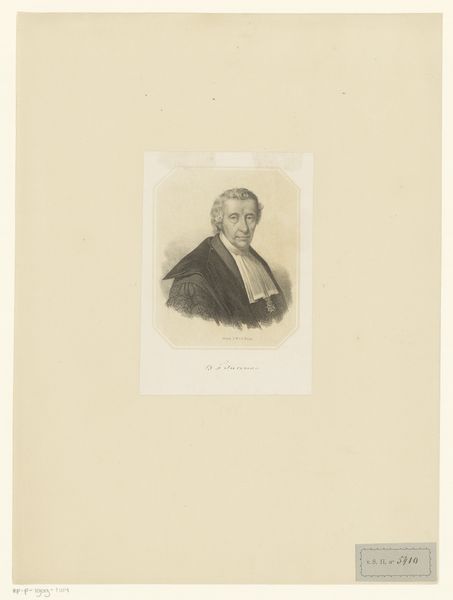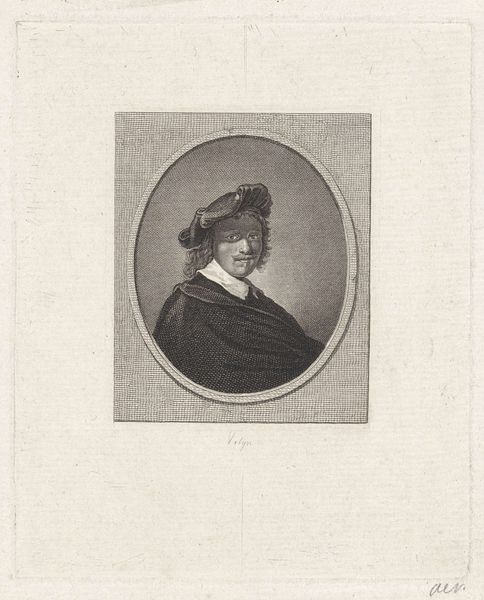
drawing, pencil
#
pencil drawn
#
drawing
#
pencil sketch
#
pencil
#
academic-art
Dimensions: height 367 mm, width 232 mm
Copyright: Rijks Museum: Open Domain
Curator: What a delicate, wistful drawing. My immediate reaction is of contained strength – perhaps it’s in the subject's steady gaze. Editor: It's interesting that you use the word "strength" to describe this rendering, because what I observe is actually an incredibly complex convergence of identities at play. The artwork, titled "Portret van Louise de Coligny", resides here at the Rijksmuseum and although its creator remains anonymous, we believe it was created in the 18th century. We see an academic style pencil sketch on paper. Given the identity of the sitter, there is perhaps much to be unearthed when questioning the notion of both protestant nobility, female portraiture, and academic drawing practices during that particular epoch in European history. Curator: Yes, “protestant nobility” are incredibly loaded words, especially for Louise de Coligny. The daughter of the assassinated Gaspard de Coligny, a Huguenot leader murdered during the St. Bartholomew’s Day Massacre, this portrait evokes complex symbolical meaning as she would later become the fourth wife of William the Silent, a leader of the Dutch Revolt. Editor: Indeed, the imagery itself whispers volumes. The details of the drawing suggest the subject has the restrained dignity fitting her status, but is that simple or accurate? Look at the subtle textures the artist coaxes from pencil – the soft lace at her shoulders. Consider the way the light falls; even within this simple portrait lies tension between status and individual identity. Is this her “Sunday best?” What can that imply about her relationship to sartorial visual statements in the 18th century? Curator: The medium, though humble, speaks volumes about the drawing's potential as a more radical political object than one may think. The pencil sketch is also a medium historically connected to both sketching and the transmission of political ideas. Looking closely at her visage—that resolute gaze meets our own through centuries of political change and artistic development—and that fact alone I find rather powerful. Editor: Well put. I find myself contemplating how cultural memory is stored in these images – both intended and perhaps accidental symbolism. The nuances are very intriguing when one can allow the object to take on multiple interpretations. Curator: Precisely. When observing portraiture we must actively look for how we participate and perpetuate these ongoing dialogues around identity. I will take those observations away with me and keep them in mind. Thank you. Editor: A most intriguing exchange that highlighted just a fraction of the layers that are observable when approaching artwork with these interpretative frameworks. Thank you for being so forthright.
Comments
No comments
Be the first to comment and join the conversation on the ultimate creative platform.
